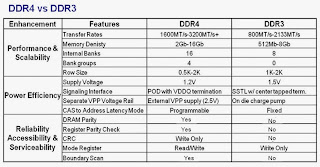Consolidation of semiconductor manufacturing is pushing Altera to use Intel as its foundry. Similar to Apple using Samsung for it DRAM, NAND memory, and microprocessors (A4-A7).
"Altera announced that its Stratix 10 system-on-a-chip (SoC) will incorporate a "high-performance, quad-core 64-bit ARM Cortex-A53 processor."
That chip will be manufactured for Altera by Intel on its most advanced 14-nanometer manufacturing process. Current Intel chips on the market, such as its Haswell processor, are made on a 22-nanometer process."
More below
Ron
Insightful, timely, and accurate semiconductor consulting.
Semiconductor information and news at - http://www.maltiel-consulting.com/
Insightful, timely, and accurate semiconductor consulting.
Semiconductor information and news at - http://www.maltiel-consulting.com/
Irony alert: Intel to make quad-core 64-bit ARM chip
In what can only be described as highly ironic, Intel is set to make what will easily be one of the first quad-core 64-bit ARM processors.
On Tuesday, Altera announced that its Stratix 10 system-on-a-chip (SoC) will incorporate a "high-performance, quad-core 64-bit ARM Cortex-A53 processor."
That chip will be manufactured for Altera by Intel on its most advanced 14-nanometer manufacturing process. Current Intel chips on
the market, such as its Haswell processor, are made on a 22-nanometer process. Generally, the smaller the geometries, the more advanced the process.
Apple recently announced the first 64-bit chip -- also based on an ARM design -- for smartphones, the A7. But the CPU is dual-core (the graphics component is quad-core).
Intel confirmed with CNET that the chip would constitute the first 64-bit quad-core ARM CPU.
"Altera and Intel are pleased with the early results of the relationship between the companies and this announcement from Altera is consistent with the agreement we announced earlier this year. We have said that we will be open to manufacturing competitive architectures and would evaluate them on a case by case basis," said Intel spokesman Chuck Mulloy.
The quad-core 64-bit ARM chip is part of semiconductor device called a field-programmable gate array or FPGA, which is a chip that can be configured by a customer after manufacturing.
In this case, the chip is targeted at high-end networking and communication equipment, among other specialized applications, so it won't be competing directly with the likes of Samsung, Nvidia, or Qualcomm. Those companies supply processors to smartphone and tablet makers.
But it does mean that Intel is leading the charge on manufacturing multiprocessors based on designs from ARM -- a rival of Intel's in the smartphone and tablet markets.
And it does point to the potential conflicts that lurk in its contract manufacturing business, aka "foundry" business, founded in 2010 -- for which Intel is aggressively recruiting talent.
Intel is slated to begin production in 2014.


